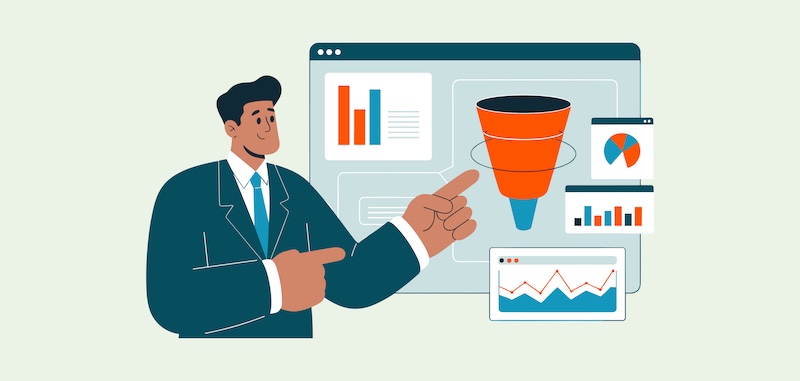Conga research shows a stark truth for revenue leaders and their teams: inefficiencies in revenue operations are more than just speed bumps in the process.
With 97% of decision-makers expecting increased pressure to maximize revenue in the next two years, the margin for error has evaporated. Yet, nearly half of professionals lack confidence in their organization’s ability to capture all available revenue opportunities. The consequences? Higher costs, missed opportunities and even revenue leakage.
With organizations facing economic uncertainty, officials are rethinking how they manage their revenue lifecycle. Addressing inefficiencies in systems, processes, and cross-departmental collaboration can unlock significant value— not just for the bottom line but also for customer satisfaction and strategic flexibility.
To better understand this evolving landscape, Conga’s Chief Customer Officer, Chris Bishop answered a series of questions that included how businesses can optimize revenue operations, leverage integrated technology, and adopt artificial intelligence (AI) innovations to stay competitive.
Demand Gen Report (DGR): Chris, thanks for joining us. What are some of the most overlooked revenue opportunities in B2B marketing, and how can businesses proactively uncover them?
Chris Bishop: Thanks for having me. One of the most overlooked revenue opportunities in B2B marketing is within your existing customer base. Too often, teams focus heavily on net-new acquisition and forget that upsell, cross-sell, and expansion opportunities are often sitting right in front of them. According to the Conga Revenue Imperative Report, nearly two-thirds of organizations admit these areas are not fully optimized, which means there’s a lot of untapped potential just sitting in the customer base.
Businesses can proactively uncover these opportunities by streamlining processes, improving data visibility, and integrating systems. When teams have shared access to real-time insights across the revenue lifecycle, it becomes much easier to spot patterns, act on buying signals, and deliver timely, relevant offers that drive growth.
DGR: Can you share an example of a successful campaign or strategy that significantly boosted revenue for a B2B enterprise?
Bishop: A great example is Nearmap, a fast-growing aerial imagery company that needed to overhaul their revenue operations to keep up with demand. They implemented the Conga Revenue Lifecycle Cloud— covering everything from configure, price, quote (CPQ) and contract lifecycle management (CLM) to billing and eSignature— and it totally transformed their process.
Not only were they able to launch a new SMB packaging model and speed up enterprise deals, but by purchasing through AWS Marketplace, they maximized their existing tech budget and streamlined backend operations. It was a smart, scalable move that accelerated both revenue and efficiency.
DGR: How do you ensure alignment between marketing, sales, and revenue operations to create a seamless revenue generation process?
Bishop: Alignment really comes to life when teams are working from the same end-to-end platform. As we noted in the report, organizations with fully integrated revenue tech stacks are 2.5x more likely to be extremely confident in their ability to manage and capture revenue effectively. Yet, 55% of organizations still report a lack of deeply integrated sales and finance data across teams, which creates major blind spots and slows down decision-making.
A unified platform solves for this by creating a single source of truth— bringing marketing, sales, and rev ops together so everyone’s seeing the same data, tracking the same KPIs, and moving toward shared goals. That kind of transparency helps break down silos, improves collaboration, and accelerates revenue capture. With integrated tools and consistent feedback loops, teams can act faster, optimize smarter, and build a more seamless, scalable revenue engine across the business.
DGR: How is technology, specifically artificial intelligence (AI) and automation, reshaping the way B2B companies identify and capture revenue opportunities?
Bishop: AI and automation are total game-changers for B2B revenue teams. We found 87% of professionals are confident in AI’s ability to improve business performance, and 41% have made reducing errors through automation a top priority for the year ahead. These technologies help organizations surface insights they might otherwise miss— like buying signals, customer behavior trends, or hidden revenue opportunities— so they can prioritize the right accounts at the right time.
Automation takes it further by streamlining repetitive tasks like outreach, quoting, and follow-ups. In fact, 61% of professionals report spending six or more hours a week on manual, revenue-related tasks; time that could be redirected toward strategy, selling, and relationship-building. It’s not about replacing people, it’s about equipping teams with smarter tools to move faster, work more efficiently, and close the gaps that slow revenue down.
DGR: What role does data integration across sales and finance play in improving revenue visibility, and how can businesses overcome common integration challenges?
Bishop: Data integration between sales and finance is foundational for improving revenue visibility. When those teams are aligned and working from the same data, businesses can make faster, more accurate decisions. But right now, 55% of organizations still report a lack of deeply integrated sales and finance data, which limits visibility and creates costly inefficiencies.
The impact is clear: top-performing organizations with fully integrated systems are 4x more likely to feel confident in their ability to identify and capture revenue opportunities. The key to overcoming these challenges is investing in unified platforms that break down data silos and promote collaboration. It’s not just a tech fix, it’s about creating a connected revenue ecosystem that helps teams act smarter and scale faster.
DGR: Customer retention is a major focus in revenue management. What tactics do you recommend for improving customer retention in B2B organizations?
Bishop: Customer retention is where long-term revenue really lives, especially in B2B. One of the best tactics is making sure the post-sale experience is just as strategic as the pre-sale one. That means aligning customer success, sales, and support around shared goals, proactively monitoring customer health, and acting on signals like product usage or support tickets. Personalized check-ins, value-driven content, and regular business reviews can also go a long way in reinforcing your value. And don’t overlook automation – streamlining renewals and reminders helps make retention feel seamless, not forced.
DGR: How can businesses optimize their revenue lifecycle, from lead generation and sales to post-sale customer renewals, for maximum efficiency and growth?
Bishop: Optimizing the revenue lifecycle really comes down to breaking down silos and building a connected, data-driven process from end to end. That means aligning teams around shared KPIs, integrating tools so data flows seamlessly from marketing to sales to customer success, and automating where it counts— like quoting, contracting, and renewals. The goal is to create one continuous journey, not a series of handoffs. When everyone has visibility into the full lifecycle, it’s easier to spot gaps, act on opportunities, and drive consistent, scalable growth.
DGR: What key barriers or inefficiencies do B2B organizations face when trying to optimize revenue processes, and how can they overcome them?
Bishop: Lack of integration. On top of not having deeply integrated sales and finance data, 45% say manual, time-consuming tasks are a major barrier, and nearly 60% experience errors in pricing, quoting, or contracts that directly impact revenue outcomes. Overcoming these inefficiencies starts with unifying tech stacks, automating routine tasks, and creating shared visibility across teams. When everyone’s working from the same data and systems, it’s much easier to reduce friction, move faster, and unlock new revenue opportunities.
DGR: With many companies reporting time-consuming manual tasks and revenue leakage, where should businesses prioritize improvements to achieve the biggest impact?
Bishop: To make the biggest impact, businesses should start by tackling the manual, repetitive tasks that eat up time and introduce errors. Data from The Revenue Imperative Report indicates that 61% of professionals spend six or more hours a week on manual revenue-related tasks, and 43% of companies risk losing sales due to inefficient processes. Automating high-friction areas like quoting, contracting, and billing can free up teams to focus on strategy and growth. Pair that with better data integration— especially across sales and finance— and you’ve got a clear path to reducing revenue leakage and boosting efficiency across the board.
DGR: Looking ahead, what emerging trends or opportunities do you predict will have the biggest influence on how B2B marketers maximize revenue over the next two to three years?
Bishop: AI and automation will have the biggest impact on how B2B marketers drive revenue. We’re already seeing early adopters use AI for smarter segmentation, predictive insights, and personalized outreach at scale— but that’s just the beginning. As tools become more accessible and integrated, marketers will be able to act on real-time signals across the entire customer lifecycle.
Another big opportunity? Breaking down silos. Unifying sales, marketing, and customer data will be key to delivering connected experiences that drive retention and expansion, not just acquisition.







